SwRI team zeroes in on source of the impactor that wiped out the dinosaurs
Friday, 30 July 2021 09:49 The impactor believed to have wiped out the dinosaurs and other life forms on Earth some 66 million years ago likely came from the outer half of the main asteroid belt, a region previously thought to produce few impactors.
Researchers from Southwest Research Institute have shown that the processes that deliver large asteroids to Earth from that region occur at least 10 times more frequentl
The impactor believed to have wiped out the dinosaurs and other life forms on Earth some 66 million years ago likely came from the outer half of the main asteroid belt, a region previously thought to produce few impactors.
Researchers from Southwest Research Institute have shown that the processes that deliver large asteroids to Earth from that region occur at least 10 times more frequentl Airbus completes integration of 3rd Copernicus Sentinel-2
Friday, 30 July 2021 09:49 Airbus has finished the integration of the Copernicus Sentinel-2C satellite. It is the third of its kind and will now be shipped to Munich to undergo extensive environmental tests to prove its readiness for space. The test campaign will last until March 2022.
The data gathered by Sentinel-2 satellites are used for monitoring land use and changes, soil sealing, land management, agriculture,
Airbus has finished the integration of the Copernicus Sentinel-2C satellite. It is the third of its kind and will now be shipped to Munich to undergo extensive environmental tests to prove its readiness for space. The test campaign will last until March 2022.
The data gathered by Sentinel-2 satellites are used for monitoring land use and changes, soil sealing, land management, agriculture, World's first re-progammable commercial satellite set to launch
Friday, 30 July 2021 07:04
The European Space Agency will on Friday launch the world's first commercial fully re-programmable satellite, paving the way for a new era of more flexible communications.
Unlike conventional models that are designed and "hard-wired" on Earth and cannot be repurposed once in orbit, the Eutelsat Quantum is based on so-called software-defined technology that allows users to tailor the communications to their needs—almost in real-time.
"When a satellite is launched, demand and markets can change over time," Elodie Viau, the agency's telecommunications and applications director, told AFP recently.
"A satellite that is not 'fixed' and can adapt to customers gives us better prospects."
A successful launch would pave the way for mass production of the satellites, which have so far been one-offs.
The Quantum will be part of the payload for an Ariane 5 rocket due to launch from the Guiana Space Centre in Latin America between 21:00 and 22:30 GMT on Friday.
In addition to the Quantum, to be operated by Paris-based Eutelsat, the rocket will also deploy a conventional satellite for Brazil's Embratel.
Because it can be reprogrammed while orbiting in a fixed position 35,000 kilometres (22,000 miles) above the Earth, the Quantum can respond to changing demands for data transmission and secure communications during its 15-year lifetime, ESA said.
Earth from Space: Malé, the Maldives
Friday, 30 July 2021 07:00
The Copernicus Sentinel-2 mission takes us over Malé – the capital and most populous city in the Republic of Maldives.
New Russian lab briefly knocks space station out of position
Friday, 30 July 2021 06:45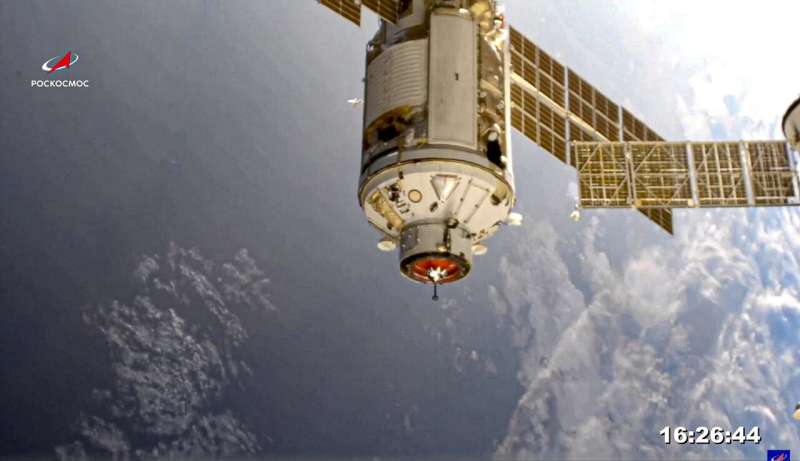
Station loses attitude control after Nauka docking, Starliner launch delayed
Thursday, 29 July 2021 22:19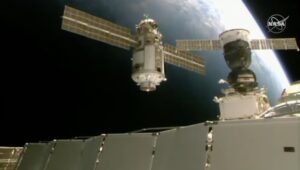
A Russian module that docked to the International Space Station July 29 started firing its thrusters hours later, briefly knocking the station out of its normal attitude and forcing NASA to delay a commercial crew test flight that was scheduled to launch July 30.
Biden taps Aerospace Corp.’s John Plumb to run DoD space policy
Thursday, 29 July 2021 18:15
President Biden has nominated John Plumb to be assistant secretary of defense for space policy, the White House announced July 29.
Ground system for NASA's Roman Space Telescope moves into development
Thursday, 29 July 2021 16:08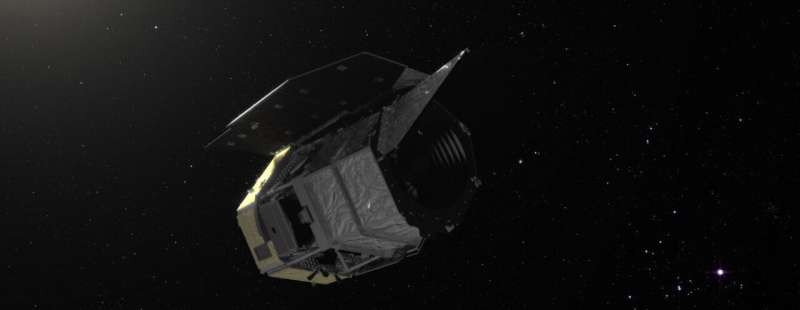
When it launches in the mid-2020s, NASA's Nancy Grace Roman Space Telescope will revolutionize astronomy by building on the science discoveries and technological leaps of the Hubble, Spitzer, and Webb space telescopes. The mission's wide field of view and superb resolution will enable scientists to conduct sweeping cosmic surveys, yielding a wealth of information about celestial realms from our solar system to the edge of the observable universe.
On July 23rd, the Roman Space Telescope successfully completed the critical design review of the mission's ground systems, which are spread over multiple institutions including the Space Telescope Science Institute (STScI) in Baltimore, Maryland; NASA's Goddard Space Flight Center in Greenbelt, Maryland; and Caltech/IPAC in Pasadena, California. STScI will host the Science Operations Center (SOC) while Goddard will provide the Mission Operations Center and Caltech/IPAC will house the Science Support Center. The passing of the critical design review means the plan for science operations provides all the necessary data processing and archiving capabilities. The mission will now proceed to the next phase: building and testing the newly designed systems that will enable planning and scheduling of Roman observations and managing the resulting data, anticipated to be over 20 petabytes (20,000,000 GB) within the first five years of operations.
Inmarsat unveils multi-orbit Orchestra constellation
Thursday, 29 July 2021 16:02
British operator Inmarsat plans to add at least 150 low-Earth-orbit satellites to its global fleet, stepping up competition against OneWeb and others developing megaconstellations for mobility markets.
NASA performs field test of 3D imaging system for descent and landing
Thursday, 29 July 2021 13:57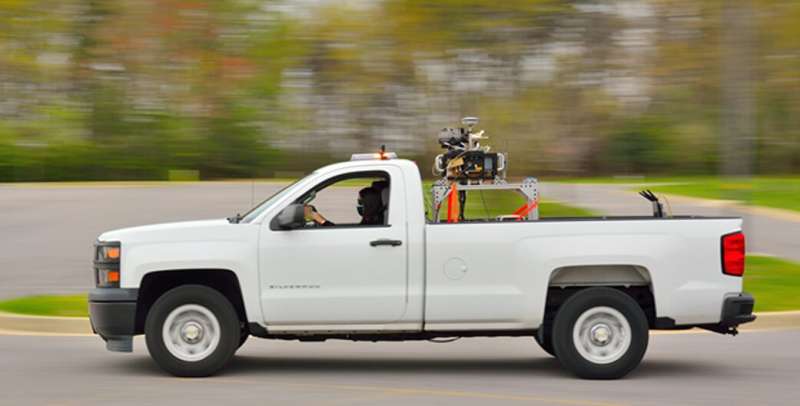
Producing rapid and accurate images on missions to the Moon, Mars and other terrestrial destinations is crucial for a safe descent and landing. A NASA project called Safe and Precise Landing—Integrated Capabilities Evolution, or SPLICE, includes a key element that will help ensure a clearer touchdown site.
The SPLICE team recently performed a dynamic test of the hazard detection lidar (HDL) engineering development unit, a prototype specifically built for testing, at NASA's Goddard Space Flight Center in Greenbelt, Maryland. HDL—an element of SPLICE—is a laser-based 3D imaging system that can quickly and accurately scan a planetary surface to create a map of the landing field. It's designed to help a mission avoid hazardous obstacles and land in a safe area.
NASA rocket carrying solar X-ray scanner set to launch
Thursday, 29 July 2021 13:57
The Marshall Grazing Incidence X-ray Spectrometer, or MaGIXS, mission is about to take flight. The launch window opens at the White Sands Missile Range in New Mexico on July 30.
Led by Dr. Amy Winebarger at NASA's Marshall Space Flight Center in Huntsville, Alabama, MaGIXS will fly aboard a sounding rocket, a launch vehicle that lifts scientific instruments above Earth's atmosphere for a few minutes in space before falling back to Earth for recovery.
Russian lab module docks with space station after 8-day trip
Thursday, 29 July 2021 12:48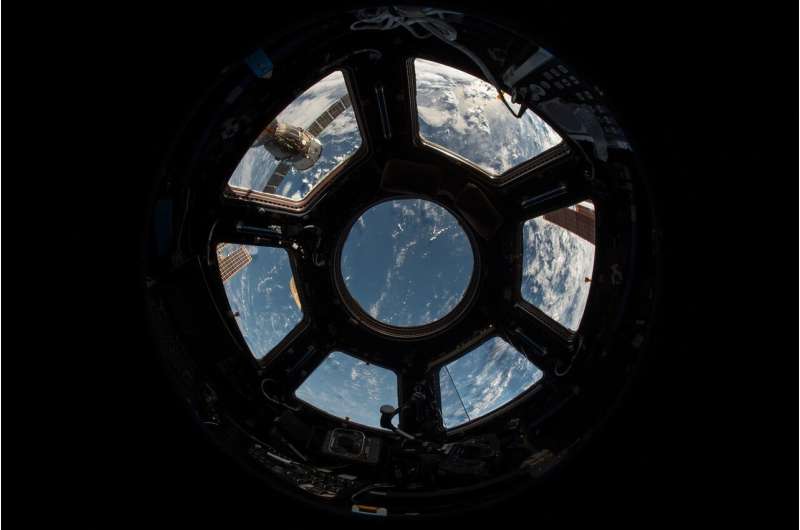
Russia's long-delayed lab module successfully docked with the International Space Station on Thursday, eight days after it was launched from the Russian space launch facility in Baikonur, Kazakhstan.
The 20-metric-ton (22-ton) Nauka module, also called the Multipurpose Laboratory Module, docked with the orbiting outpost after a long journey and a series of maneuvers.
The launch of Nauka, which is intended to provide more room for scientific experiments and space for the crew, had been repeatedly delayed because of technical problems. It was initially scheduled to go up in 2007.
In 2013, experts found contamination in its fuel system, resulting in a long and costly replacement. Other Nauka systems also underwent modernization or repairs.
Explore further
© 2021 The Associated Press. All rights reserved. This material may not be published, broadcast, rewritten or redistributed without permission.
Russia's Nauka science module docks with ISS
Thursday, 29 July 2021 12:48
Russia's long-delayed lab module successfully docked with the International Space Station on Thursday, eight days after it was launched from the Russian space launch facility in Baikonur, Kazakhstan.
The 20-metric-ton (22-ton) Nauka module, also called the Multipurpose Laboratory Module, docked with the orbiting outpost after a long journey and a series of maneuvers.
The launch of Nauka, which is intended to provide more room for scientific experiments and space for the crew, had been repeatedly delayed because of technical problems. It was initially scheduled to go up in 2007.
In 2013, experts found contamination in its fuel system, resulting in a long and costly replacement. Other Nauka systems also underwent modernization or repairs.
Explore further
© 2021 The Associated Press. All rights reserved. This material may not be published, broadcast, rewritten or redistributed without permission.
Op-ed | The costs of extreme weather and climate are soaring. Commercial space data should be a bigger part of the solution
Thursday, 29 July 2021 12:28
Weather forecasting has made steady progress during the past several decades, yet the financial costs of extreme weather are staggering and getting worse. Part of the problem is that forecast improvements for the most impactful types of weather, including hurricanes, tornadoes, flooding and winter storms, have been slower to materialize, often resulting in fluctuating forecasts and large uncertainties even at short lead times.
How the Galileo Project will search the skies for alien technology
Thursday, 29 July 2021 11:49
Can we find alien technology? That is the ambitious goal of the Galileo Project, launched this week by Harvard astrophysicist Avi Loeb with substantial private financial backing.
The project is far from the first attempt to detect signs of civilisations beyond Earth. Loeb has been criticized in the past for his dismissive approach to previous efforts to find extraterrestrial life and his argument that an alien artifact passed through our solar system in 2017.
So why do Loeb and his collaborators think they have a chance of finding something where others have failed? There are three triggers that suggest they might.
Exoplanets, "Oumuamua, and UFOs
First, years of painstaking observations have shown that many stars host Earth-like planets. There is a real chance these "exoplanets" might be home to alien civilisations.
Second, five years ago, an interstellar visitor, dubbed "Oumuamua, tumbled though our solar system. It was a skinny object about 400 meters long, and we know from its speed and trajectory that it arrived from outside our solar system. It was the first time we had ever seen an interstellar object enter our neighborhood.
